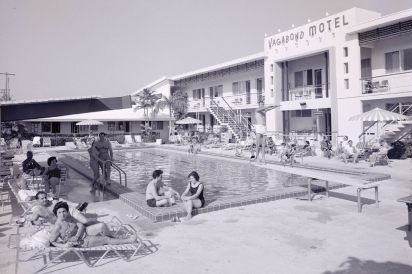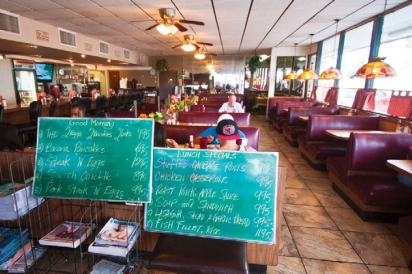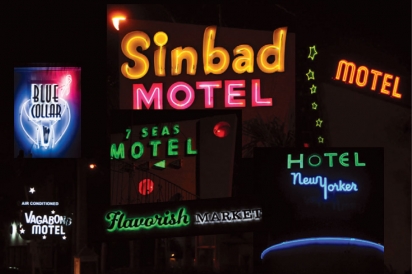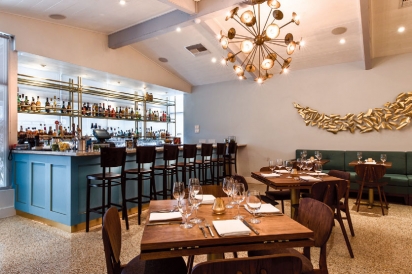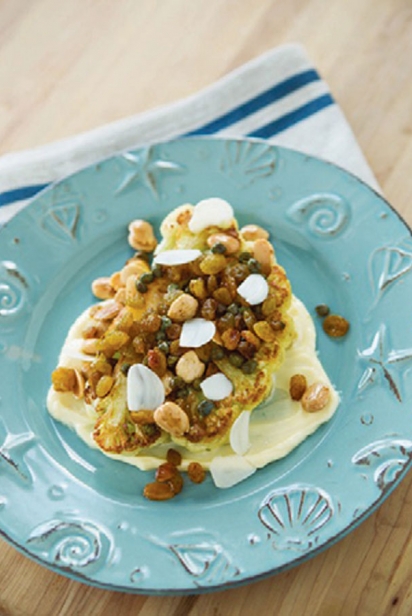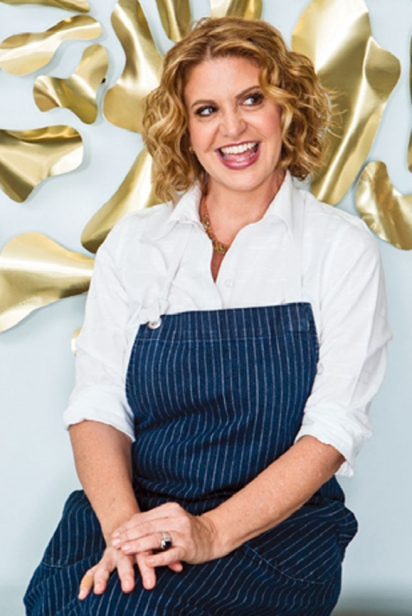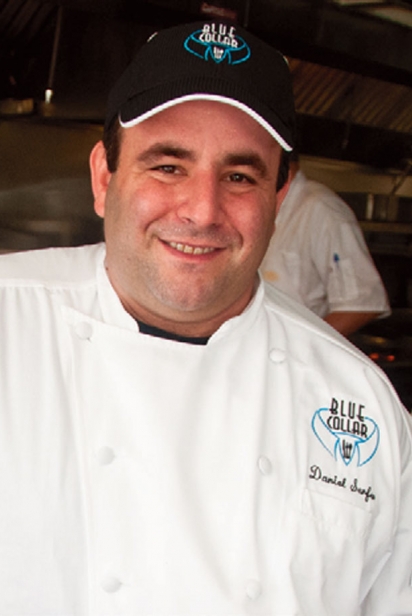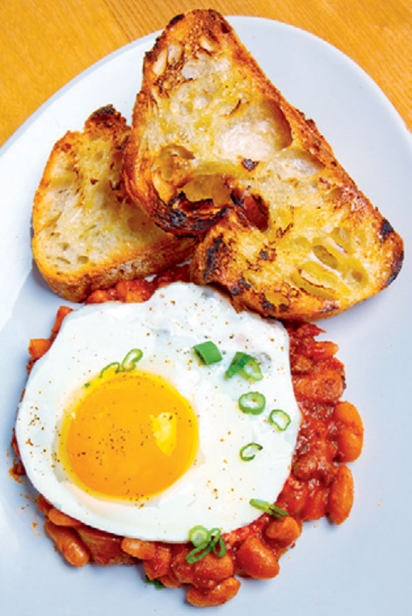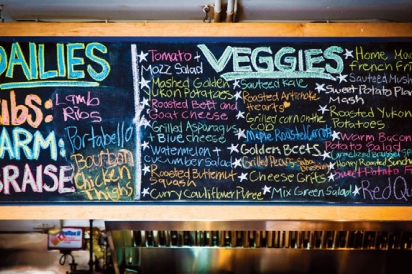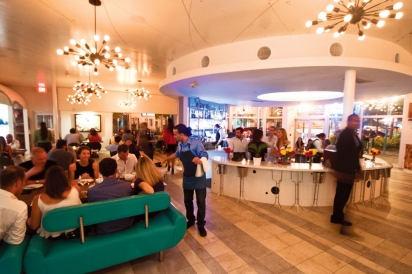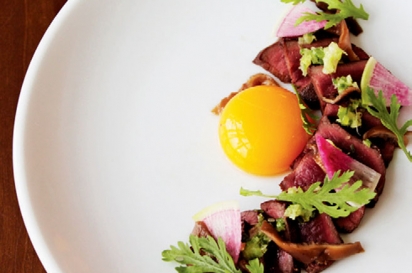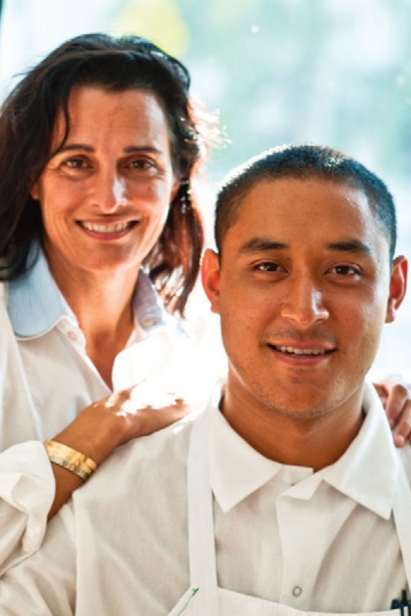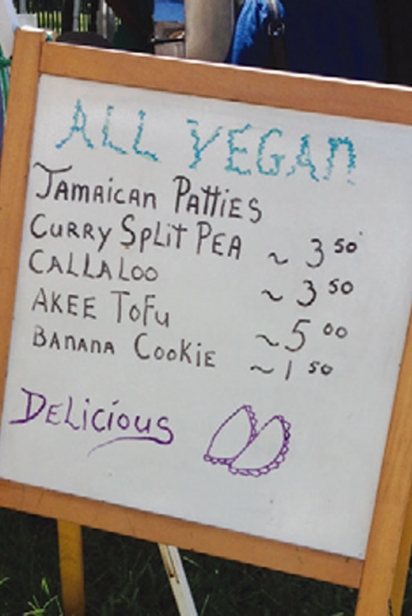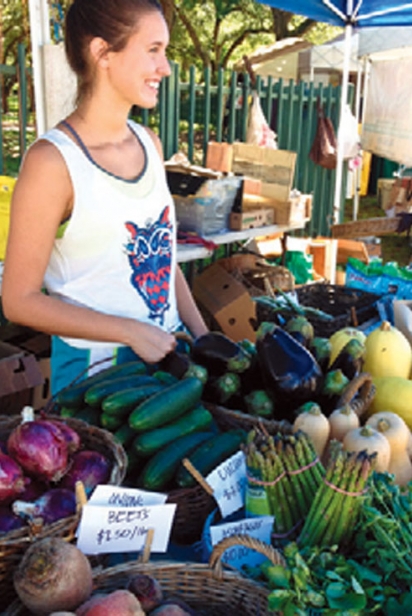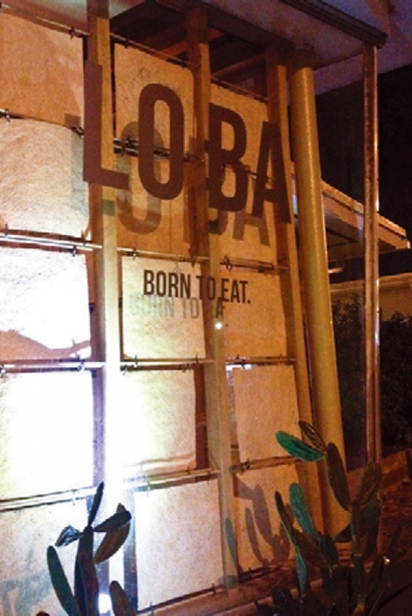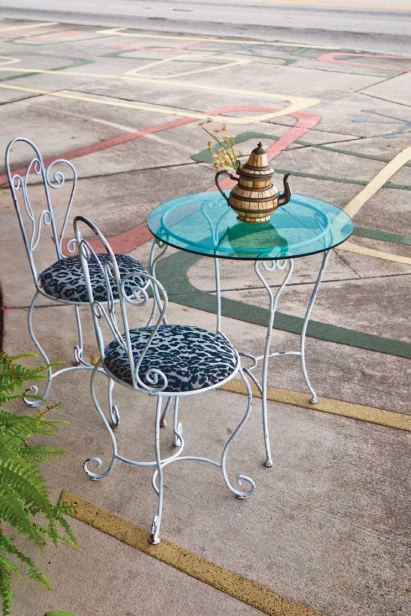Meet MiMo
Real estate boom and bust cycles. Flashy, fanciful architecture. Nerve-wracking traffic. Road construction projects that seem to take forever. Sound familiar? It’s all part of the story of Miami’s Biscayne Boulevard. But not present-day Miami. Rather, it’s the Miami of the 1920s through 1950s.
Past, present and future have a way of colliding on this thoroughfare.
That past reaches back to 1925, when Biscayne Boulevard was conceived of as a means to get people between downtown and a real estate development in what is now Miami Shores. The road took years to complete, and construction along the corridor was stymied for decades: first by a hurricane, then the Great Depression, then World War II.
But the post-war period brought a period of unprecedented economic prosperity, and with it came a wave of new construction. The architecture embodied the optimism of the era: Bright hopes were reflected in the neon signs and angular, futuristic designs of motels and other businesses intended to serve Miami’s burgeoning tourist market and increasingly suburban residents. While there are buildings of many styles and eras along this stretch, it is that 1950s space-age, Jetsons-esque look that best exemplifies what is so unique about Biscayne Boulevard’s MiMo – Miami Modern – district.
By the 1970s, however, Biscayne Boulevard had fallen on hard times. Many of those once-cheery motels became by-the-hour havens for the panoply of illicit activities that were routinely peddled along the street outside. For more than 20 years, this road has been part of my daily commute, and I still recall my young daughter asking, as we took her to Cushman School, “Why is that lady walking around in her underwear?”
Yet after decades of decline, the Boulevard is coming back in a big way. The official designation of the stretch between NE 50th Street and 77th Street as a historic district in 2006 marked a turning point, a recognition of the value of preserving a prior era’s architectural vision of the future. And in the past two years especially, I’ve seen more (non-criminal) activity along the Boulevard than in the earlier two decades combined.
Aside from architecture and history, what draws people here? For many, it’s one of the most common catalysts for revitalizing neglected neighborhoods: food. Exciting new restaurants have opened up alongside old stalwarts. A local farmers market brings crowds every weekend, while gourmet food and housewares shops help fill the rest of the table. Soon the Boulevard will feature a new cooking school, as well as the headquarters of one of Miami’s most successful restaurant groups.
Here are some highlights from the past, present and future of Biscayne Boulevard’s MiMo District.
The Old Guard
Many of Biscayne Boulevard’s architectural gems are preserved relatively intact. Some, like the Sinbad Motel, seem almost literally unchanged, other than the metal star once suspended from a pole on its roof which disappeared some years ago after a hurricane. Others have been restored, like the Motel New Yorker, updated in 2009 but still looking from the outside much the same as when it was built in 1953, with the exception of a neon “H” replacing the “M” in the sign (“hotels” are easier to market than “motels” these days).
But for a real living history of Biscayne Boulevard, I go to Jimmy’s Eastside Diner. In truth, Jimmy’s doesn’t actually date back to the Boulevard’s 1950s glory; its pedigree only extends to the 1970s. But walk in, and you’ll get the sense that it hasn’t changed a bit since the day it opened. For breakfast, get eggs with Jimmy’s jumbo country sausage, biscuits and gravy, or blueberry hot cakes; later in the day, have a BLT, or a house-roasted turkey or meatloaf sandwich. It’s hard to find a good old-fashioned diner like this any more in Miami, but thankfully, Jimmy’s abides.
The Pioneers
Nearly a decade ago in 2006, the same year the MiMo District got its official historical designation, chef and local treasure Michelle Bernstein opened Michy’s right in the middle of it all at Biscayne and 69th Street. Though there wasn’t much else there at the time, Michy’s quickly became one of Miami’s most celebrated restaurants. Then last year she decided it was time for a change, and the restaurant was closed for nearly a year. It was reborn this summer as Cena by Michy, making it something both old and new.
The updated look is more casual and comfortable (I may have been the only one other than Michelle who loved the earlier version’s “Barbie Dream House” decor), and so is the food. There are vegetable dishes if you’re looking to eat light, like a vibrant beet and sorghum risotto, or a grilled cauliflower steak with the Mediterranean flavors of marcona almonds, capers and raisins. If eating light is not your priority, there’s “MB’s favorite burger,” and an updated version of the supple braised short rib that was an all-time favorite at Michy’s. All of it is still prepared with the attention to technique and flavor that define chef Bernstein’s style.
Since Michy’s first opened, several restaurants have come and gone along this stretch. One that seems to have made itself a permanent fixture is Daniel Serfer’s Blue Collar, opened in 2012 inside the Biscayne Inn, originally the Stardust Motel – a place that, at one point in the 1990s, was shut down as a public nuisance, with police saying that so much cocaine moved through the Stardust that its units should be connected by a ski lift.
Blue Collar is a pitch-perfect rendition of a next-generation diner: straightforward, sincere, hearty food, but prepared by a chef with fine-dining chops. The menu ranges from finesse (seared scallops with fennel, tomatoes and peas in a clam jus) to blunt force (the “Corben,” named after local documentary director Billy Corben, featuring braised brisket piled into a Portuguese muffin, served with jus for dipping, latkes and apple sauce for noshing), and it’s all good.
The Jain Gang
If there is a flagship for the newly revitalized MiMo District, it would be the Vagabond, a motel that’s been impeccably restored by developer Avra Jain. The trapezoidal marquee, neon sign and swooping carport all remain faithful to its original 50s style. But the hotel is now fully updated and decidedly hip, as is the in-house restaurant which shares its name. To run the kitchen, restaurateur and art collector Alvaro Perez Miranda brought in young chef Alex Chang, who had first drawn attention for a series of underground dinners he orchestrated while in school in Los Angeles, then spent a couple years working at high-end restaurants around the world.
That global experience is reflected in Chang’s menu, which uses the Vagabond name as a thematic jumping-off point. Bold diners may taste both China and Mexico in the toasted peanuts and chapulines (grasshoppers!) dusted with Szechuan peppercorn, cilantro and lime, or the flavors of Japanese sukiyaki in a dish of seared beef heart with a barely warmed egg yolk, pickled shiitake mushrooms and shungiku (chrysanthemum) leaves. If bugs and hearts aren’t your thing, you can opt for the jerk-spiced chicken wings smoked over allspice leaves inspired by Little Haiti a few blocks to the west, or a rethought rendition of sweet and sour shrimp spiked with pineapple vinegar and chile oil, served up on recycled P.F. Chang’s dinner plates. You can also have a cocktail at the outdoor bar by the hotel pool, where weekends usually feature a DJ or live music, and imagine you’re on spring break with the Rat Pack.
The Vagabond is one of several properties Jain has acquired and refurbished in the neighborhood. Other projects include the South Pacific Motel, which she is turning into a “Wotel” with work office suites; the Stephens International Motel next door, in which she’s built a modern, glass-shelled new space for a Starbucks in between the motel’s historic bookends; and the Royal Motel next to the Vagabond, which will be reborn with its original name – the Knoxon – and a cooking school to be run by South Florida culinary godfather Norman Van Aken.
Avra Jain: ‘There’s a lot of nostalgia here’
Developer and historic preservationist Avra Jain looks to the past in reviving the neighborhood. “What it was before tells you how it should be again,” she says. In the mid-1950s and ‘60s, if you couldn’t afford to stay at the Eden Roc, you’d stay at the small, family-owned motels on Biscayne Boulevard. Of course, when Jain first set her sights on the Biscayne Corridor, it was its more recent seedy past that she saw firsthand. “We bought seven motels. There were SWAT raids every month. The things I found on the properties!” She saved a motel sign that she found in the Royal next door: “No refunds after five minutes.”
In addition to lovingly restoring motels, Jain envisions a vibrant restaurant scene, building on a foundation that’s developed over the past decade. “I think food and beverage creates neighborhoods, along with walkability and shopping,” she says. Since opening the Vagabond restaurant, she says she’s gratified at how well received the area’s renaissance has been. “I underestimated the emotional value of this project,” she says. “People come up to me and say ‘thank you – this is where I had my honeymoon.’ There’s a lot of nostalgia there. When you buy older properties, you buy people’s memories.”
The New Faces
Directly across the street from the Vagabond is another notable new addition to the neighborhood. 50 Eggs, the restaurant group that owns and operates Yardbird, Swine, BTW and the upcoming Spring Chicken, chose an Art Deco-era three-story building here (originally the Alda Rochester Motel) as the site for its corporate headquarters. Rumors persist that it will also house a test kitchen to try out (and, hopefully, invite diners to try) new concepts and dishes.
Renewed interest in the area has brought more modest projects as well. A glowing neon cartoon of a vampy, polka-dot-bikini-clad lady marks the brick-and-mortar location for Ms. Cheezious, the popular food truck. She could be a grown-up version of the bare-tushed Coppertone Girl sign just to the south, whose original location in the 1950s was downtown on Biscayne Boulevard, and made her way back to the Boulevard 50 years later. Here you can choose from more than a dozen variations on the theme of grilled cheese, paired with local beers from Wynwood Brewing Co., M.I.A. Brewing Co., J. Wakefield Brewing and others.
Or go next door to Loba, a cozy spot opened by Jessica Sanchez, a former financial analyst who sees the restaurant as something of a proving ground for aspiring culinary students. As a result the menu changes often, but some highlights have included a whole grilled fish blanketed in fresh herbs, greens, tart citrus and guava, and a dessert called “Frida’s Secret” which combines a spicy Mexican chocolate brownie, sweet corn ice cream from Azucar on Calle Ocho, and crispy chocolate-coated corn flakes.
The Shops
The MiMo District is becoming something of a mecca for home cooks.
For several years, Legion Park has hosted the Upper Eastside Farmers Market on Saturdays, where you can stock up on locally grown fruits and vegetables and prepared products like smoked fish, baked breads, empanadas and arepas.
A few blocks north, you can pop into Flavorish Market for a nice selection of cheeses, salumi, wines and other staples like imported dried pastas and jarred goods.
Need something to serve it on? Keep going to F.O.H. (Front Of House), a long-time supplier of dinnerware and serving pieces to the restaurant industry, which recently opened a showroom on the northern end of the MiMo District.
The Future
Several more interesting projects are in the pipeline. Jeffrey Soyka will be turning the Bay Shore Pump House, a gorgeous 1920s era coral rock building up the street from his namesake restaurant Soyka’s, into the Coral House, a 100-seater with a Mediterranean-inspired menu.
Though these spots are actually just off Biscayne Boulevard on NE 4th Court, Soyka’s – opened in 1999 – surely also deserves credit as one of the neighborhood’s original pioneers. Aniece Meinhold and Cesar Zapata, the team behind The Federal (on Biscayne Boulevard just south of the MiMo District) will be recreating the magic of their Vietnamese inspired popup, Phuc Yea!, in a permanent location, which recently got a facelift to reveal the original Art Deco features of the Sir William Hotel.
South Florida’s favorite local coffee roaster, Panther Coffee, is coming soon to the Boulevard. The Motel Blu – originally the Gold Dust Motel, and more recently home to the late, lamented restaurant Red Light – has a new owner as of last year, who plans to put in another restaurant and also reopen the Gold Dust Lounge downstairs.
For all its ups and downs, the future of the MiMo District is looking neon-bright these days.



